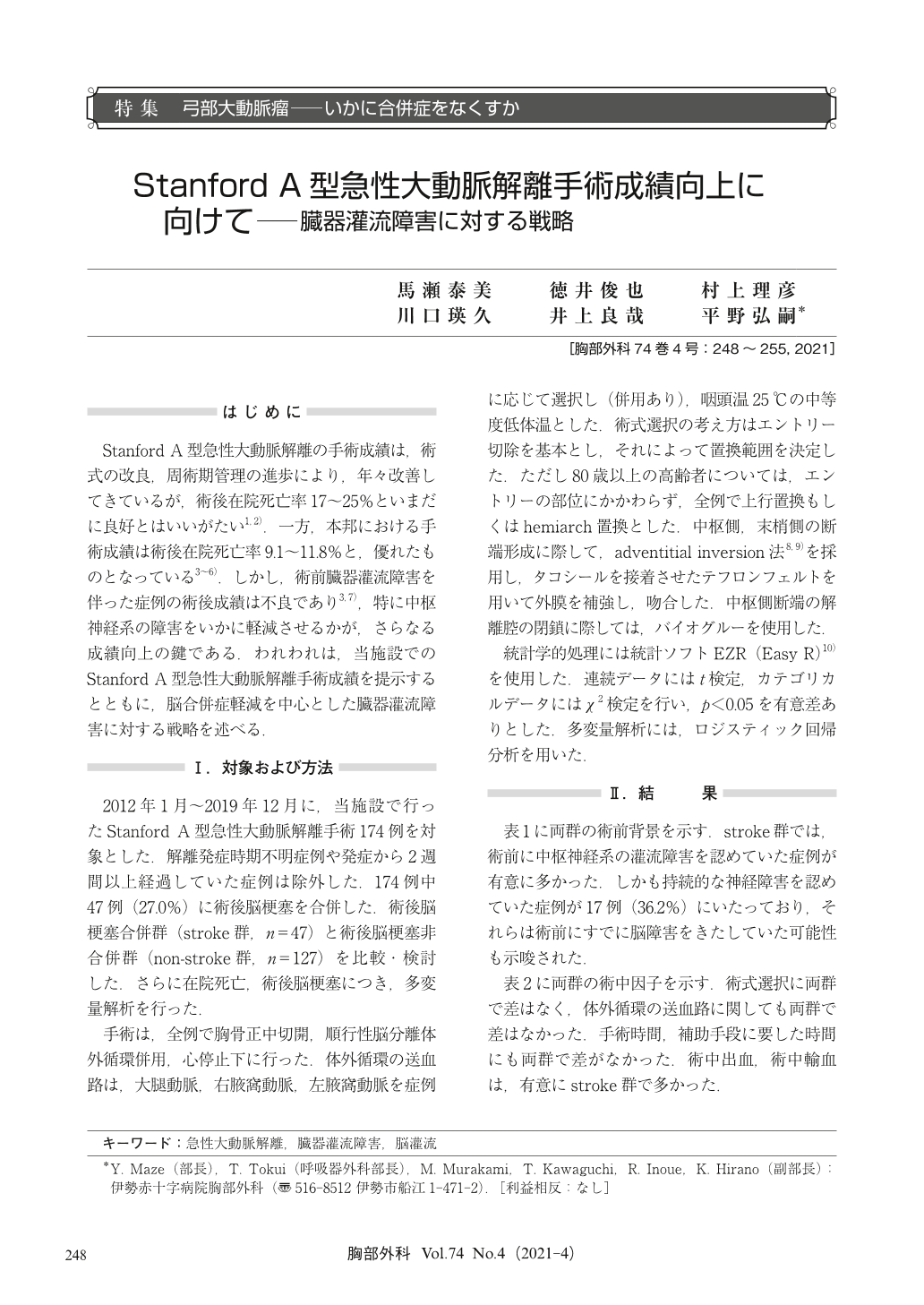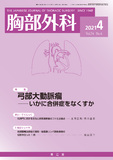Japanese
English
- 有料閲覧
- Abstract 文献概要
- 1ページ目 Look Inside
- 参考文献 Reference
Stanford A型急性大動脈解離の手術成績は,術式の改良,周術期管理の進歩により,年々改善してきているが,術後在院死亡率17~25%といまだに良好とはいいがたい1,2).一方,本邦における手術成績は術後在院死亡率9.1~11.8%と,優れたものとなっている3~6).しかし,術前臓器灌流障害を伴った症例の術後成績は不良であり3,7),特に中枢神経系の障害をいかに軽減させるかが,さらなる成績向上の鍵である.われわれは,当施設でのStanford A型急性大動脈解離手術成績を提示するとともに,脳合併症軽減を中心とした臓器灌流障害に対する戦略を述べる.
Objectives:We presented the results of surgery for Stanford type A acute aortic dissection at our hospital and described strategies for organ malperfusion (especially brain malperfusion).
Results:From January 2012 to December 2019, we underwent 174 patients of Stanford type A acute aortic dissection at our hospital. There were 47 patients (27.0%) with postoperative cerebral infarction (stroke group). Compared to the non-stroke group, the stroke group had significantly more cases of persistent central nervous system malperfusion before surgery and had more intraoperative bleeding and blood transfusion. The hospital mortality was 23.4% in the stroke group and 3.9% in the non-stroke group (p<0.001). As a result of multivariate analysis, risk factors for hospital mortality were preoperative endotracheal intubation, long-term cardiopulmonary bypass time and postoperative stroke. The risk factor for postoperative stroke was preoperative central nervous system malperfusion.
Conclusions:As a strategy for cerebral malperfusion, it is useful to use the right axillary artery blood supply and the isolated cerebral perfusion method.

© Nankodo Co., Ltd., 2021


